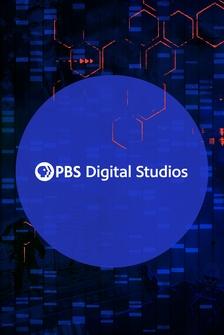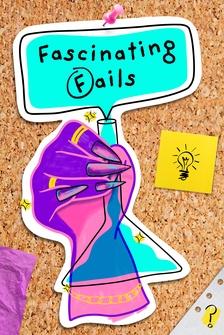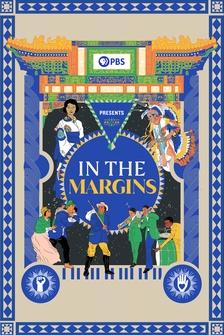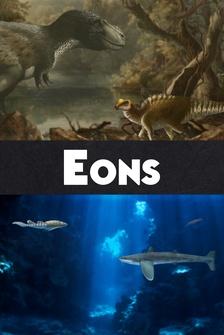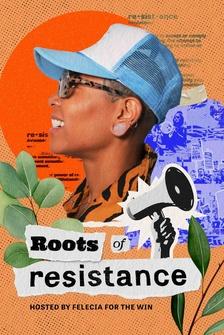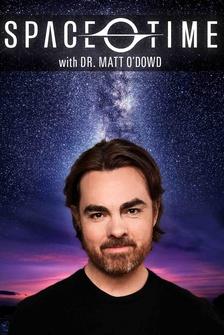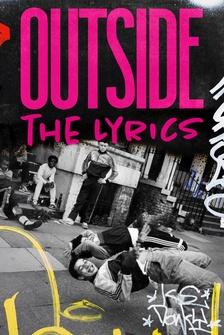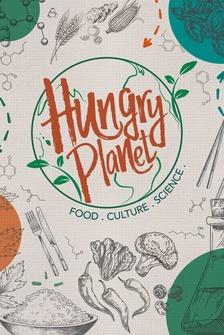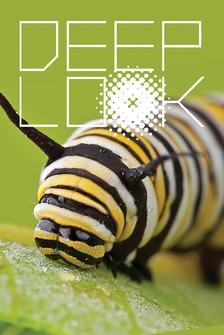- In a climate changed world of warming oceans and rising sea levels, storms are becoming more powerful and destructive, which if you say you live in a massive city on a giant archipelago, that's definitely something you wanna, I don't know, figure out?
Pollution, ecosystem loss, climate change-fueled super storms and flooding.
What could possibly save the city from a triad of troubles like that?
Oysters.
About a billion of them.
Wait, a billion with a B?
- A billion with a B.
(compelling theme music) - [Joe] Hey, smart people, Joe here.
When people picture New York, they think of skyscrapers, subways, fashion, and old lady liberty.
And cool KT9 stat style vlog transitions.
You know what they don't picture?
Water.
Which is fricking insane because New York City, as much as Hong Kong or Venice, is a city built on islands.
I mean, there's more than 40 of them, not just that one or that long one, or the one with a Statue of Liberty on it.
I mean, New York City's a flippin' archipelago, but I guarantee you, most New Yorkers never think about this.
Here, you hold this.
(feet patter) Now, if you're wondering how a city literally full of famous bridges could be so ignorant to all that strange wet stuff underneath them, that's because, well, until recently, New York Harbor was so polluted and gross, it made that pond from the Simpsons with that three eyed fish look like a fresh mountain spring.
We're talking mercury, dioxin, PCBs, all the greatest hits of 20th century human industrial pollution, and plenty of raw human sewage to top it off.
But since the 1970s, the Environmental Protection Agency has mostly convinced people to stop pouring that stuff in the water.
But that wasn't before humans basically chemically nuked the local aquatic ecosystem into oblivion.
Now, I don't know your personal belief regarding karma, but in 2012, after being abused and ignored for a couple hundred years, Mother Nature reminded New York just how close it actually is to the water in basically the rudest way possible, by dropping an 1100 mile-wide hurricane smack dab on the city.
- This evening, (TV static buzzes) you can see it's swirling right over my shoulder here, what's being called a Super Storm tonight.
- This city is basically underwater.
- [Reporter] We've got some cars that are submerged over there.
As this water just continues to pour in.
- [News Reporter] The city's vital infrastructure, its underground subways crippled.
The system that carries 5 million riders every day, still a deluge tunnel of darkness.
- [Joe] In the wake of these disasters, a few New Yorkers wondered if nature could both protect New York from future Super Storms and clean up a century of human pollution.
If only they could bring back the ecosystem this city was built on.
Well, that's where New York City's Billion Oyster Project comes in.
Their mission is pretty much what it says in the name, putting a billion living oysters in New York Harbor by 2035.
But to understand why someone would want to plant a billion oysters in New York Harbor, you need to understand what it was like before any of this was here.
In 1609, Explorer Henry Hudson sailed to what is now New York Harbor on a mission for Holland, to find a faster trade route to the Pacific Ocean.
Unfortunately, for him, that's not a thing.
There's like this whole continent in the way, but Hudson returned to Holland with some good news.
- Yeah, baby!
- He'd just passed this place called Sant Hoek.
It was this magical body of water, and descriptions of the time, they talk about more fish than they can even count.
(water splashes) Flocks of birds that would block out the sun.
And so many beavers just begging to be made into hats.
So he tells Holland, "Set up shop here, you're gonna be rich."
(cash register clinks) So around 1624, they established New Netherland as a commercial business operation with its biggest settlement called New Amsterdam, right on the site of New York City today.
The early city is built on an estuary, a complicated web of tidal ponds, marshes, wetlands, and at the bottom of all of this, were oyster beds.
Hundreds of miles worth, covering hundreds of thousands of acres.
And it's thought at one time, half of Earth's oysters lived here.
New York Harbor may have been the richest marine ecosystem in North America.
And at the bottom of all of that, oysters were the keystone species.
- Today we're actually gonna be looking at some of our oyster research stations, which are on sites.
All right, do you wanna do the honors, or would you like me to pull it up?
- We're working here.
- I know.
Earlier today, I pulled out this magnificent oyster.
Look how large it is.
It's crazy big.
And you can imagine like an oyster that's only three inches can filter 30 to 50 gallons of water in a day.
Right?
- Wow.
- And we have cages of these.
- And this, so this thing's super powerful, like 70, 80 gallons, at least, this guy.
- Probably closer to 50.
I think they cap out.
But I mean, it's nice to think that he goes through a lot in a day, you know?
I don't know what's going to come outta this cage.
So I'm really excited to check out the oysters, what critters we find, and how great they are.
- Yeah, right.
This is a little ecosystem in a box.
I can't wait to see.
Now let's pull this up and see what kind of critters we got.
- Yes.
This is an oyster research station.
Oyster research stations are all over New York.
We have about 250 of them throughout the harbor, and they're used by community scientists.
They're used by school teachers, they're used by community based organizations.
So it's very, very cool.
It is a open access way of engaging with your harbor and opening that waterfront.
These are a great way of being like, oh my God, I saw a fish or a seahorse, or whatever it is here in New York.
- [Joe] It's like a museum and a classroom in a box.
- Exactly.
- Okay.
Oysters do so many things for the ecosystem.
They build reef structures that provide habitat for other organisms, places for small animals to hide, places for barnacles and anemones to attach, places for fish to get all romantic and lay their eggs.
Oh, we got all fishy.
- Yeah.
- Come here.
- Oh, there's multiple.
Look at that.
- Oh, whoa.
What is this thingy?
- So these are, I'll try to get this one for you.
All right.
So as you could probably tell, oysters are really cool at engineering habitat for other fish.
So these are some of my favorite fish.
This one over here is called a Skilletfish.
It also doesn't actually have scales.
- It does look like a fish booger.
- Yeah.
- I like that.
- This one here that you're holding is called a blackfish or a Tautog.
They are everywhere, but this is definitely a juvenile.
So not only do our oyster reefs provide habitat, but they also provide habitat for these juveniles to grow up until they're big.
- [Joe] Ooh, yeah.
This crazy yellow stuff all over this.
- And we're only 20 feet away from the other one, right?
- Yeah.
- So this is an adult blackfish.
Now, I also have to watch my fingers here.
- I can see the teeth on this thing.
- So this is an adult blackfish.
It's totally not full grown yet, which is wild.
But this was such a shock to pull up earlier today, and I'm so happy, - Which means it has been in here its entire life, just hanging out.
Alright, we got some little crustacean friends.
- Yeah.
- Are you gonna try to nibble my- - Oh my God.
- You're being chill.
- Oh, so these are mud crabs.
Mud crabs are really common among our cages as well.
I love this because check it out.
Even a dead oyster provides habitat.
Do you see that little crab?
- So he was probably in there cleaning up all the, all the extra snacks that was left behind.
- Exactly, yeah.
Alright, so not only do crabs hide here, this is an oyster toad fish.
- I can see how it gets that name.
- Yeah.
- It's living in an oyster and it looks like a toad.
- That, and it will actually make a toad sound at night.
It sounds kind of like a foghorn.
- Really?
- Uh huh.
So these guys are sometimes viewed as predators of oysters, but sometimes viewed as protectors of oysters.
- These reefs prevent erosion.
They act as breakwaters to absorb wave and storm surge energy, and perhaps their most amazing job, filtering the water, slurping up pollution, sequestering it as they feed.
A single adult oyster can filter up to 50 gallons of water a day, and that is a cleaning service unmatched by any other organism.
There's just one problems.
Humans really love to eat oysters.
When the Dutch first arrived, it turns out there are these whole societies of people who've been living on the continent for like, thousands of years.
The tribes around New Amsterdam called themselves Lenape, meaning the original people, and the Lenape loved oysters.
We know that because oyster shells, they last a really long time, and archeologists have found enormous buried piles of shells in this area, dating as far back as 6,000 years.
But as Lenape land became new Amsterdam, then British New York, and finally the busiest city in these here United States, people's appetite for oysters went gangbusters.
It's legitimately hard to believe this today, but from the 17th to the mid 19th century, New York wasn't known for stonks or fashion or theater or rats the size of puppies.
It was famous for oysters.
Almost every corner had an oyster cart, just like hotdog stands are today.
Oysters are sold at all these all night markets, like all you can eat for 5 cents.
New York oysters were shipped nationwide on the growing network of canals and railroads.
And at the peak, there were a million New York oysters being consumed every day.
Shockingly, that's not sustainable.
Almost overnight, humans literally ate away one of the world's richest ecosystems.
At the same time, New York was dumping raw sewage, industrial toxic waste, straight into the harbor.
So now without those hundreds of billions of oysters filtering the water the way that they do so well, New York Harbor became one of the most polluted and lifeless waterways on earth.
Fortunately, since the passage of the Clean Water Act in 1972 made it illegal to treat US waterways like public sewers for toxic waste, New York Harbor has been slowly getting cleaner.
And a few ambitious people wondered if it was time to reintroduce those magic mollusks where they used to thrive.
Billion Oyster Project starts by collecting used oyster shells from restaurant partners around New York City.
Oysters from New York Harbor won't be safe to eat for decades, but after New York seafood lovers slurp down oysters from around the world, their shells end up at Billion Oyster Project Headquarters on Governor's Island.
After these shells are cured in the sun for months or even years to remove diseases and any leftover oyster tissue, they're packed in special cages like these, or ground up into concrete reef balls like this one.
That's because oysters really like to grow on other oysters.
Oysters spend their first weeks of life as free swimming larva before settling down as spat and attaching to an adult oyster shell.
So these cages full of used oyster shells provide places for baby oysters to settle down and build self-sustaining oyster reefs.
So far, Billion Oyster Project has restored 122 million oysters across 19 acres of harbor in all five boroughs.
So why do this?
Well, in addition to all those nice things oysters do for biology, even their literal physical presence can help the city.
You remember that little hurricane named Sandy we talked about earlier?
Well, oyster reefs can act as living breakwaters absorbing energy from waves and storm surge, protecting the city from future storms.
If you think of New York Harbor as if it was once a forest instead of an underwater ecosystem, you had this great big forest full of trees and cool animals like wolves and bears and stuff like that.
Well, then all of a sudden, people came along and they chopped down the forest and they built their logging roads, and now like 30 million people live there.
Well, we'd want to grow that forest back because we value these things.
They're important to us.
Now imagine, instead of bringing back trees, it's oysters.
That's what Billion Oyster Project's trying to do.
Not just clean up their mess, but restore something that's even better than what's living here today.
From the very first humans to settle here, thousands of years ago, all the way to European settlers and immigrants to young America, people have been coming here because of the richness that nature provided.
New York City literally wouldn't exist if it weren't for the humble oyster.
And for cities like this one to continue to exist as they do today with millions of people living next to rising seas, in a future that's likely to bring more and more devastating storms, humanity will have to look to solutions that don't just come from what we can build, but come from the amazing things that nature's already built.
Billion Oyster Project's work is only just the beginning.
It'll take decades to restore just a fraction of the oysters that were once here.
But as Frank Sinatra said about New York, "If I can make it here, I can make it anywhere."
And I guess he was talking about oysters too.
Stay curious.




